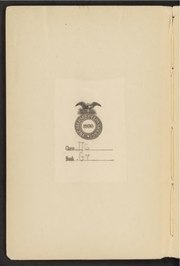Berkas:Java and Madura.pdf

Ukuran asli (875 × 1.285 piksel, ukuran berkas: 7,97 MB, tipe MIME: application/pdf, 116 halaman)
Berkas ini berasal dari Wikimedia Commons dan mungkin digunakan oleh proyek-proyek lain. Deskripsi dari halaman deskripsinya ditunjukkan di bawah ini.
Ringkasan
| DeskripsiJava and Madura.pdf |
English: In preparation for the peace conference that was expected to follow World War I, in the spring of 1917 the British Foreign Office established a special section responsible for preparing background information for use by British delegates to the conference. Java and Madura is Number 82 in a series of more than 160 studies produced by the section, most of which were published after the conclusion of the 1919 Paris Peace Conference. Java was the most populous island in what was then the Dutch East Indies (present-day Indonesia). Madura is a small island located off the northeast coast of Java. The book includes sections on physical and political geography, political history, social and political conditions, and economic conditions. It notes that the estimated population of Java and Madura in 1912 was just over 36 million, making these islands among the most densely populated places in the world. The study traces the growth of Dutch influence on the islands, beginning with the opening of trade relations in 1598, followed by the establishment of the Netherlands East India Company in 1602 and struggles with the sultan of Mataram and rival British colonialists for control. It stresses the cruel and exploitative nature of the system of statutory labor imposed by the Dutch, aimed at extracting profits, primarily from agriculture. Considerable attention is paid to the novel Max Havelaar (1860), written by a former official in the Dutch East Indian civil service, which exposed a system of compulsory labor that the study characterizes as tantamount to slavery. The novel led to reforms but by no means ended the exploitation of native laborers. The main crops grown in Java and Madura at this time included cassava, grains, rice, cinchona (used in making quinine), coffee, cocoa, rubber, and spices. World Digital Library. |
| Tanggal | |
| Sumber | https://www.loc.gov/item/a22000939/ |
| Pembuat | Great Britain. Foreign Office. Historical Section. |
Lisensi
| Public domainPublic domainfalsefalse |
|
This work is in the public domain in its country of origin and other countries and areas where the copyright term is the author's life plus 70 years or fewer. Karya ini berada dalam domain publik di Amerika Serikat karena karya ini dipublikasikan (atau didaftarkan di U.S. Copyright Office) sebelum 1 Januari 1929. | |
| Berkas ini telah diidentifikasi bebas dari pembatasan menurut hukum hak cipta termasuk semua hak terkait dan relevan. | |
https://creativecommons.org/publicdomain/mark/1.0/PDMCreative Commons Public Domain Mark 1.0falsefalse
Captions
Items portrayed in this file
menggambarkan
1920
application/pdf
Riwayat berkas
Klik pada tanggal/waktu untuk melihat berkas ini pada saat tersebut.
| Tanggal/Waktu | Miniatur | Dimensi | Pengguna | Komentar | |
|---|---|---|---|---|---|
| terkini | 3 Juli 2022 20.53 |  | 875 × 1.285, 116 halaman (7,97 MB) | Bennylin | Uploaded a work by ----- from ----- with UploadWizard |
Penggunaan berkas
Tidak ada halaman yang menggunakan berkas ini.
Metadata
Berkas ini mengandung informasi tambahan yang mungkin ditambahkan oleh kamera digital atau pemindai yang digunakan untuk membuat atau mendigitalisasi berkas. Jika berkas ini telah mengalami modifikasi, rincian yang ada mungkin tidak secara penuh merefleksikan informasi dari gambar yang sudah dimodifikasi ini.
| Tanggal terakhir perubahan metadata | 3 September 2019 15.13 |
|---|---|
| Perangkat lunak | PDF Compressor 7.7.04.46 |
| Tanggal dan waktu digitalisasi | 3 September 2019 14.13 |
| Tanggal dan waktu perubahan berkas | 3 September 2019 14.13 |
| Program konversi | LuraDocument PDF v2.72 |
| Dienkripsi | no |
| Ukuran halaman |
|
| Versi format PDF | 1.5 |

